Introduction
The Ranney Letters are a series of letters written by the brothers of a single family, all born in Ashfield Massachusetts in the early years of the nineteenth century. This branch of the Ranney family moved to Phelps in western New York in 1833, leaving one sixteen-year old son behind in Ashfield. Henry Sears Ranney spent most of the rest of his life living in Ashfield and died there. He left behind letters he had received from his brothers, as they continued to spread westward. The Ranney brothers stayed in close contact with each other for over sixty years and their letters are a window into the lives and concerns of rural people in the nineteenth century.
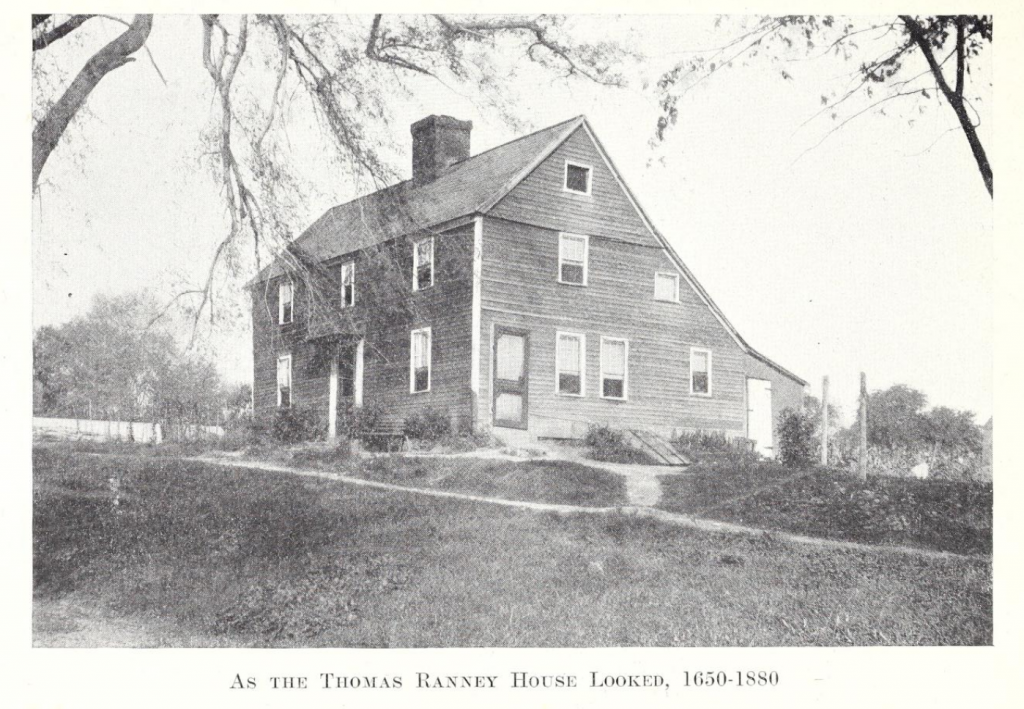
So who were these Ranneys? What can we find out about them, to set the scene for this series of letters? Looking for information on a family like the Ranneys in nineteenth century America, we have a pretty wide variety of sources available to us. As many descendants of more recent immigrants to the Americas have found, European communities where their families originated were not always good at record-keeping. There may be nothing written down about an average family except births, deaths, and marriages in a local church register — and that register may have been lost or destroyed. Luckily, Americans seem to have valued genealogical information from very early in our history. The list of birthdates Lewis provides for Henry in the first letter of the collection is an indication of this. And this impulse wasn’t limited only to Mayflower descendants (which the Ranneys were not). Between the middle and the end of the nineteenth century people started publishing books tracing the genealogies of families like the Ranneys. According to the Ranney book, (Founders, fathers and patriots of Middletown upper houses, 1903), the family in America originates with a Scottish immigrant named Thomas Ranney, born in 1616, who settled in Middletown Connecticut in the mid-1650s. Although no one knows why Thomas left his native Scotland, the Scots were defeated by Cromwell’s parliamentary forces at Dunbar in 1650, leading to the unification of England and Scotland in 1653. It’s possible that Ranney, like many of his countrymen, chose to emigrate as a result of these events or the social changes they caused. The book on Middletown’s early history (Charles Collard Adams’s Middletown Upper Houses: A History of the North Society of Middletown, Connecticut, from 1650 to 1800, with Genealogical and Biographical Chapters on the Early Families and a Full Genealogy of the Ranney Family, 1908) agrees with the Ranney book (which is not unusual, since most of these early sources borrowed freely from each other without attribution) and elaborates. Thomas Ranney became a landowner in Middletown in 1658, and married seventeen-year old Mary Hubbard, a daughter of another founding family, in 1659. By 1670, Thomas was paying £105 in taxes, placing him ninth on the list of 52 town proprietors. Thomas was not a member of a church (most of his descendants would be similarly irreligious). He died at age 97 in 1713, the last surviving settler. In his will, Thomas gave grants of land to each of his ten surviving children. In addition to his homestead, valued at £110, Thomas’s estate included nearly 400 acres of land and was valued at £757. Thomas Ranney died a fairly wealthy man.
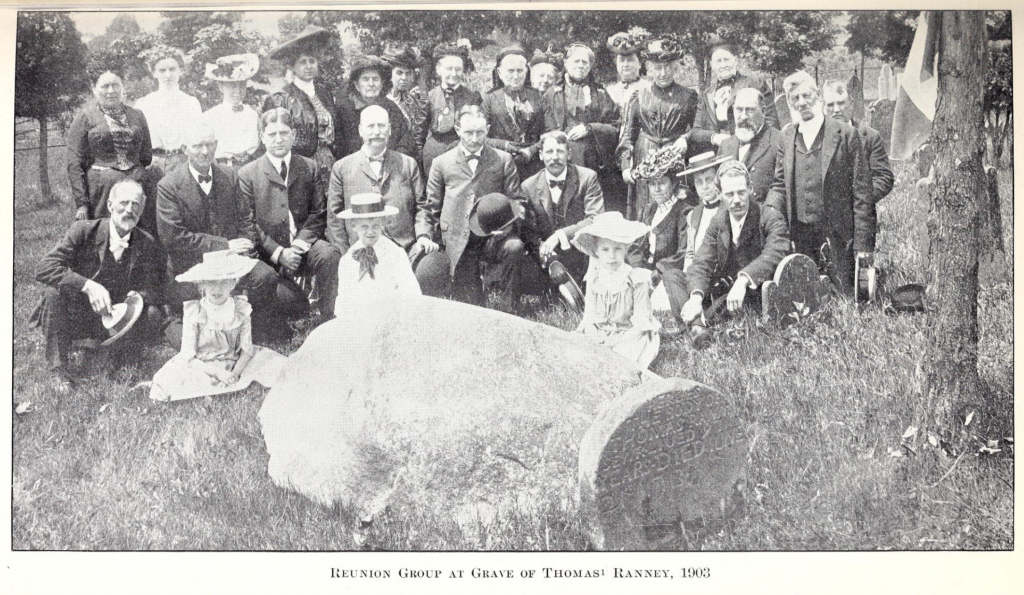
Thomas Ranney’s great-great-grandson, George Ranney III, was born in Middletown in 1746. By this time, Middletown had become the largest port city between Boston and New York, with more international shipping than Hartford or New Haven. The oldest son of a main branch in what was already a large and complicated family tree, George entered the “West India trade” as a young man. The trade, which flourished from the 1750s until the Revolutionary War, is evasively described by local historians as “carrying out mules, horses, and hay, and bringing back rum, sugar, molasses, and fine woods.” Although Middletown had a larger slave population than any other Connecticut city (peaking at 218 in 1756, according to most accounts), it is unclear whether the young George Ranney was involved in this aspect of the trade, or whether he ever actually went to sea. But since the money that islands like Barbados used to buy New England livestock, food, and fodder was derived from income on sugar produced by slaves and sold in the British market, there is little point splitting hairs: Middletown’s “West India” economy was part of the British colonial system and the slave-based sugar economy.
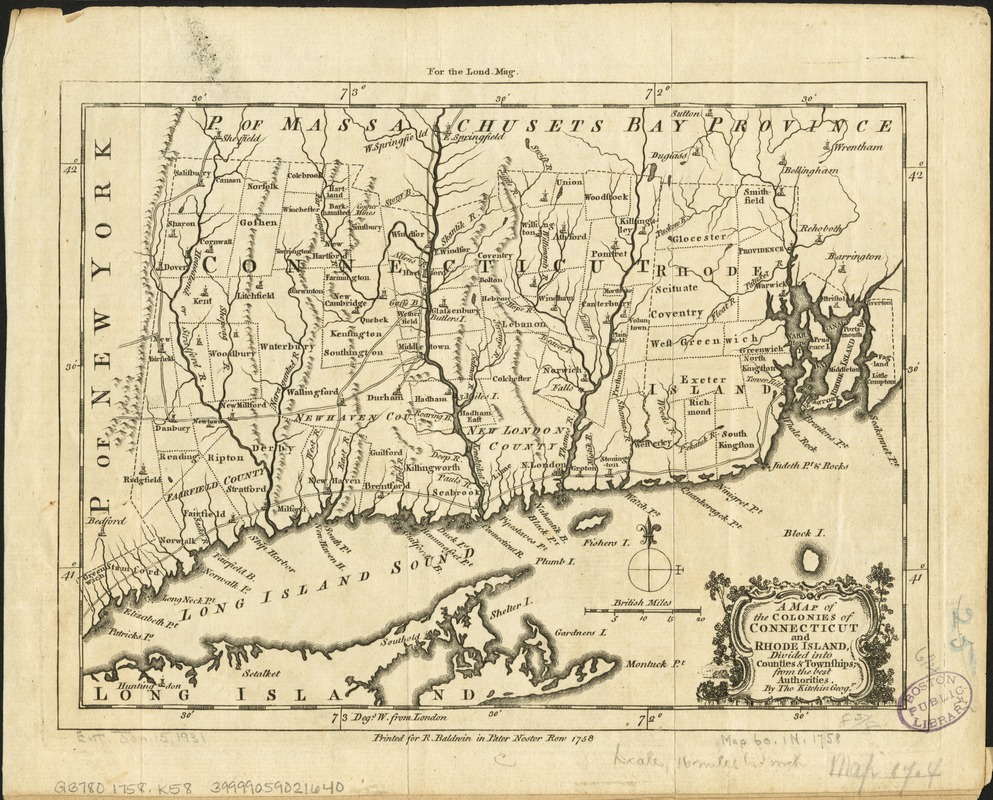
What is known about George Ranney is that he married Esther Hall, daughter of Captain Samuel Hall, in January 1771. George was 25, his wife 20. Captain Hall was not a ship’s master, but rather a member of another Middletown founding family, a deacon, and a captain of the militia. The Ranney and Hall families have a long history of intermarriage, and George’s younger brother Francis married Esther’s younger sister Rachel two years later. George and Esther’s first child, named Samuel Hall after his grandfather, was born in March, 1772.
The West India trade in Middletown never really recovered from the American Revolution. The British West Indian colonies found other sources of supply during the nearly decade-long conflict, and after independence Middletown’s economy began to shift toward manufacturing. In 1791, a rum distillery that came symbolize this transition was begun by a Hall relative of George’s wife Esther. Although this “last relic of former days…distilled annually, 600 hogs-heads of rum,” by the early years of the New Republic most of Middletown’s merchants had turned their attention to textiles, according to another old history, Whittemore’s 1884 History of Middlesex County: The Town and City of Middletown.
George and Esther Ranney moved their family to Ashfield Massachusetts in 1780. In addition to young Samuel, who was eight at the time of the move, the family included Jesse, age five, and Joseph, three. George IV, called George Jr. in Ashfield records and born in May 1780, may have been the first Ranney born in Ashfield. George III’s younger brothers, Francis and Thomas, moved to Ashfield in in 1786 and 1792, leaving their much younger brother Jonathan (b. 1765) to care for their aging parents and inherit the family homestead in Middletown. By the early 1800s there were many Ranney cousins in the neighborhood, including the prominent merchant and selectman Captain Roswell Ranney and his large family.
George Ranney bought a 100-acre “farm” from Lamberton Allen, and built a log house. Several Ashfield histories suggest that Allen’s so-called farm was really an uncleared tract of forest, and this suspicion is strengthened by the fact George Ranney built a log house rather than moving into an existing structure. Lamberton Allen was originally from Deerfield, about fifteen miles away on the rich, flat farmland beside the Connecticut River. In August 1746, during one of the many Indian conflicts preceding the Seven Years (“French and Indian”) War, Lamberton’s father Samuel Allen had been killed by a native raiding party while working in his fields. Two of his older children were at work with him: Eunice was “tomahawked” and Samuel Jr. was taken as a captive to Canada. The younger Samuel eventually escaped from the Indians as they were making their way northward into Canada and made his way back to Massachusetts. Samuel and his younger brothers Lamberton and Enoch settled in Ashfield, after the two younger men married daughters of the Belding family. The Beldings were another old Deerfield family who were very active in the early settlement of Ashfield. (Converse, Some of the Ancestors and Descendants of Samuel Converse, Jr…., 1905)
George and Esther’s sons grew to adulthood in Ashfield in the years between the Revolution and the War of 1812. When the Ranneys arrived in 1780, Ashfield was a tiny upcountry village that had already attracted attention beyond its borders for its “Yankee” independence. In the 1760s, the town’s new Congregational church had taken the land of Baptist residents who had refused to pay the Congregational church’s “tax” because they said their church had been there first. The Baptists protested to the colonial legislature in Boston, but the Congregationalists, led by Harvard-educated Israel Williams, refused to give back the 400 acres taken from the Baptists, and got the government to back them up. The Baptists appealed to London, and in 1769 King George III’s Privy Council gave them back their land. When the Bostonian patriots like Samuel Adams established committees of correspondence and sent out their revolutionary call just a few years later, many Ashfielders called them hypocrites. “They were calling themselves the sons of liberty and were erecting their liberty poles about the country,” said Baptist leader Ebenezer Smith, “but they did not deserve the name, for it was evident that all they wanted was liberty from oppression that they might have liberty to oppress.” (Quoted in Mark Williams, The Brittle Thread of Life, 2009)
Lamberton Allen, who sold his land to George Ranney, moved north to Vermont where his cousins Ethan and Ira Allen were local heroes. He settled on Grand Isle in Lake Champlain, between Vermont and Canada, helping to found a township called Middle Hero. At this time, Vermont was a wild frontier area between New York, New Hampshire, and Canada. The Allens and their Green Mountain Boys resisted the territorial claims of their neighbors and played each of them against the others, until 1791 when Vermont finally joined the union as its 14th state. Samuel Allen remained in Ashfield a while longer than his brother Lamberton, according to US Census data. Although he had been a lieutenant in the Revolutionary War, Samuel opposed the local and Bostonian aristocrats who he believed had betrayed the spirit of the Revolution as a people’s independence movement. Samuel led a company of local men during Shays’ Rebellion, and then refused to sign the loyalty oath required by Massachusetts authorities when the rebellion failed. Although this refusal made him unable to hold any public office due to his continuing “rebel” status, Samuel stayed in Ashfield through the 1790s before moving to Grand Isle. He was remembered by Ashfielders as “Barefoot Allen” for one of his many eccentric habits.
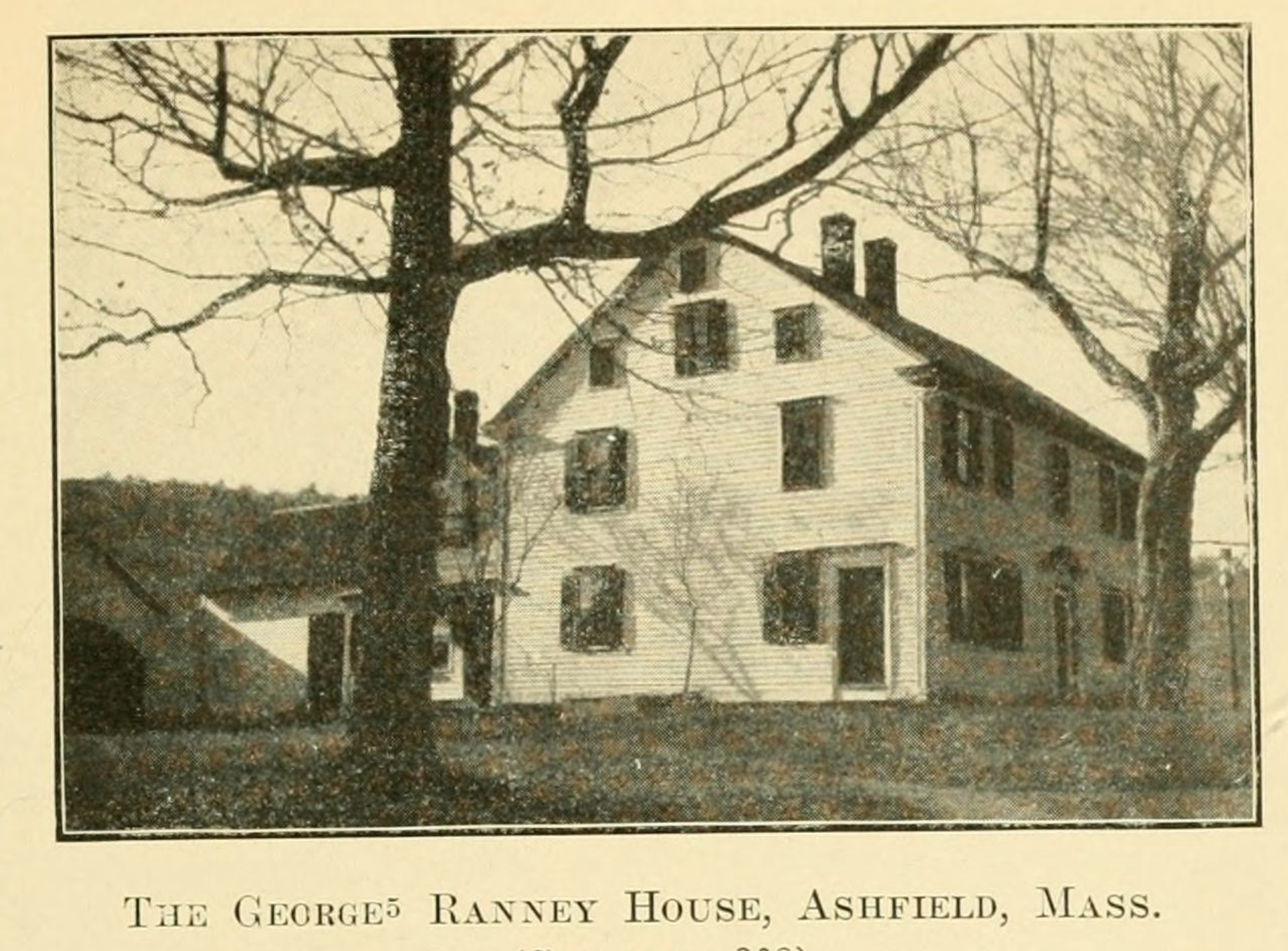
The Ranney sons were remembered for helping their father George turn his homestead into one of the best farms in Ashfield. Samuel, the oldest, had been eight years old when the family arrived in Massachusetts. Samuel settled on a parcel just south of his father’s, and in 1821 he built a two-story brick house that still stands beside Route 116 south of the town center. Second son Jesse settled on the land north of his father’s farm, which he later sold to his brother Joseph when he bought a larger farm in Ashfield. Jesse raised his family in Ashfield and died at his home in 1861, age 86. Joseph lived in Ashfield until 1838, when he was killed by a falling tree in his woodlot. Youngest brother George Ranney IV (George Jr.) was born in Ashfield in 1789.
George Ranney Jr. inherited the family homestead when his father George died at age 75 in 1822. This was traditional in early America, because older sons generally started their own farms or businesses long before the parents were ready to hand over their assets, and the youngest would be more available to take care of his parents in their old age. George lived there another eleven years, and then became the first brother to leave Ashfield, migrating to Phelps (then called Vienna) in western New York in 1833, when he was 44 years old. He took his entire family (wife Achsah Sears Ranney and eight out of their nine children) to their new home 260 miles west of Ashfield, leaving behind only his third son, 16-year old Henry Sears Ranney.
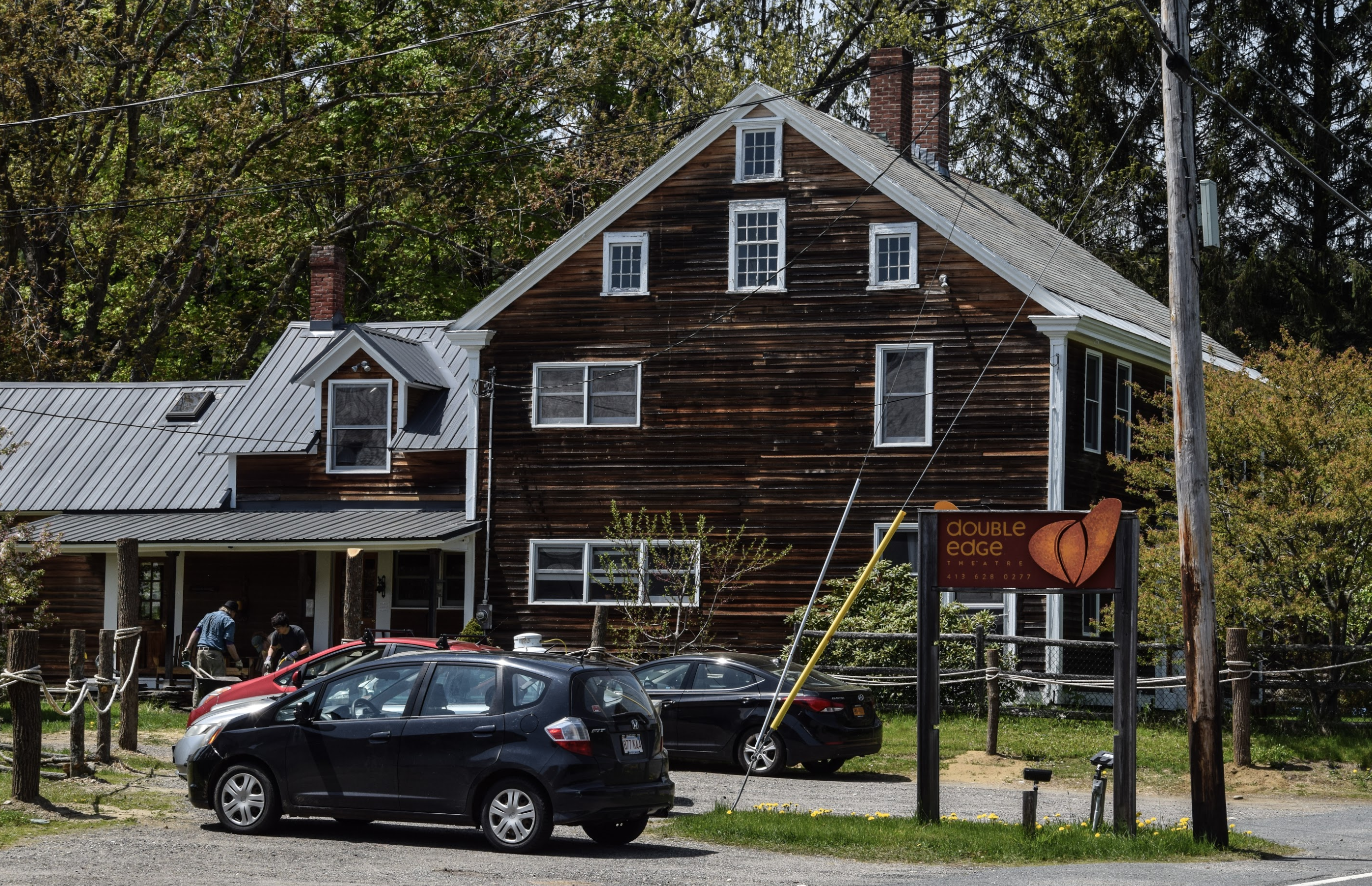
As I was doing research toward my dissertation in Ashfield Massachusetts last year, I came across the series of family letters written by six out of the eight Ranney brothers (they also had one sister who apparently wrote no letters). The Ranney brothers were all born between 1812 and 1833 in Ashfield, and all of them but the third son Henry went west — some farther than others. They wrote each other regularly for more than fifty years, and over a hundred of their letters are preserved at the Ashfield Historical Society. The collection probably includes most of the letters Henry received (he was apparently a very meticulous record-keeper, and served as Ashfield’s Town Clerk for fifty years!), but unfortunately does not include copies of letters Henry wrote. Unfortunate, but not unexpected. Although blotter-books were used in this period to make copies of handwritten letters, this practice was usually reserved for business correspondence. A collection of a hundred family letters spanning half a century is treasure for a historian. Because the writers were all brothers, there is very little time wasted on empty formality — they get right to the point and write about what’s most important to the family. Reading the letters, we get a rare glimpse at the interests and concerns of a fairly normal American family, as they experienced life in the nineteenth century.

